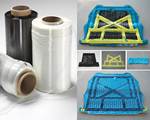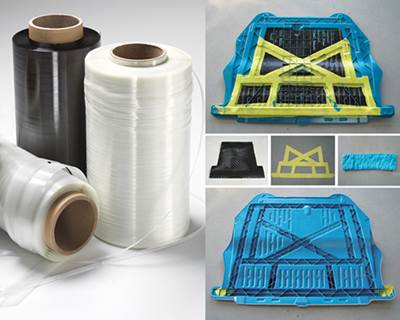Evolution of tailored D-LFT
In the past two decades, two competing composite technologies — sheet-form glass-mat thermoplastic (GMT) and pelletized long-fiber thermoplastic (LFT) — led to the development of a new form of glass-reinforced thermoplastic composite.
In the late 1990s and early 2000s two competing composite technologies — sheet-form glass-mat thermoplastic (GMT) and pelletized long-fiber thermoplastic (LFT) — led to the development of a new form of glass-reinforced thermoplastic composite.
GMT producers had been working since the 1980s to enhance the moldability of continuously reinforced, randomly oriented GMT composites, which were processed via compression molding. GMTs were very tough and relatively stiff, and they had less mass and could be processed faster than the thermoset sheet-molding compound (SMC) and metals that they commonly competed against. But as a semifinished good, traditional GMT was still costly and heavier than injection molded thermoplastics and posed significant challenges for molders who needed to fill intricate design features. The primary problem was glass bridging, which led to resin-rich areas that tended to fail before the rest of the part.
To address molding and filling issues, GMT producers experimented with discontinuous chopped-fiber products. They eventually phased out traditional continuous, randomly oriented fiber forms and settled on products whose fiber lengths (going into the tool) were on the order of 50 to 100 mm (1.97 to 3.94 inches). In situations that demanded greater stiffness and strength, their properties were further enhanced through the addition of sheets or blanks of unidirectional (UD) or fabric-reinforced GMT. This improved moldability and made GMT malleable enough for complex geometries. It also reduced cost and mass in applications where higher performance wasn't necessary, and that made the products more competitive against the rising tide of long-fiber thermoplastics.
Parallel to developments in GMT, producers of injection molded thermoplastics had been searching for ways to increase fiber length and fiber-volume fraction (FVF) to boost mechanical performance. The goal was to produce parts that could compete better in more structural applications without sacrificing the processing speeds, surface finish and finished part complexity that characterize injection molded thermoplastics.
Gradually, the glass length in precompounded resin pellets increased to 13 mm/0.51 inch, which was the maximum size that could be accommodated by the feed throat on the compounding unit of the injection molding machine. Longer fibers not only broke, but also tended to clog the equipment. In an effort to get around these limitations, inline compounding (ILC) was developed. ILC combines resin and additives at the press and brings them together with continuous-glass reinforcement (fed from large spools). The combined resin, additive and fiber mixture is immediately cut into a log or charge that is subsequently placed (manually or automatically) into an injection press and formed into parts. Later, ILC was combined with compression molding presses as well.
As GMT suppliers gave up strength and stiffness to enhance moldability and reduce mass and cost by using shorter fibers, and as injection molders sought greater strength and stiffness by incorporating longer fibers at higher fiber volumes, ILC was a technological meeting point that facilitated the direct long-fiber thermoplastics (D-LFT) process, which typically features fibers that are 20 to 40 mm/0.8 to 1.6 inches prior to molding. Further work with compression molding grades of these materials borrowed a technique from GMT producers by laying in additional blanks or charges of continuous-fiber-reinforced forms of composite with the same matrix. The technique of combining discontinuous with continuous reinforcements was developed in Europe, primarily for the automotive industry, and became known as tailored D-LFT.
Related Content
Novel dry tape for liquid molded composites
MTorres seeks to enable next-gen aircraft and open new markets for composites with low-cost, high-permeability tapes and versatile, high-speed production lines.
Read MoreComposite rebar for future infrastructure
GFRP eliminates risk of corrosion and increases durability fourfold for reinforced concrete that meets future demands as traffic, urbanization and extreme weather increase.
Read MoreThe state of recycled carbon fiber
As the need for carbon fiber rises, can recycling fill the gap?
Read MoreSulapac introduces Sulapac Flow 1.7 to replace PLA, ABS and PP in FDM, FGF
Available as filament and granules for extrusion, new wood composite matches properties yet is compostable, eliminates microplastics and reduces carbon footprint.
Read MoreRead Next
Hybrid thermoplastic molding: Toughening automotive composites
Tailored D-LFT with continuous and discontinuous glass offers best combination of strength, moldability.
Read MoreCW’s 2024 Top Shops survey offers new approach to benchmarking
Respondents that complete the survey by April 30, 2024, have the chance to be recognized as an honoree.
Read MoreComposites end markets: Energy (2024)
Composites are used widely in oil/gas, wind and other renewable energy applications. Despite market challenges, growth potential and innovation for composites continue.
Read More


























